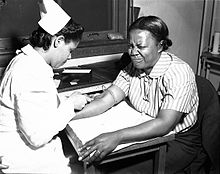Professor William Vandry’s View – May 2012
The Vandry Racehorse theory: pain, arthritis, degenerative joint, tendon and ligaments, why athletes are so unhealthy, and medical doctors own health statistics and cholesterol life span
Back in a past article I wrote (William Vandry BJJ in My Eyes: Athletes, Anxiety, Depression and the Vandry Racehorse Theory!), there was a tremendous amount of data regarding the above mentioned issues with athletes and people in general. http://www.austinbjj.com/node/282
The following statistics highlight the significant number of people in the US in pain and the impact of business and society (3):
– More than half of Americans live with chronic or recurrent pain.
– Leading causes of recurrent or persistent pain affecting Americans are headache pain, back pain, and neck pain.
-About four in 10 Americans say pain interferes with their mood, activities, sleep, ability to do work or enjoyment of life. Two-thirds report interference with any one of these.
Incidence of pain, as compared to major conditions
Pain affects more Americans than diabetes, heart disease and cancer combined. The chart below depicts the number of chronic pain sufferers compared to other major health conditions.
| Condition | Number of Sufferers | Source |
| Chronic Pain | 116 million Americans | Institute of Medicine of The National Academies (2) |
| Diabetes | 25.8 million Americans (diagnosed and estimated undiagnosed) |
American Diabetes Association (3) |
| Coronary Heart Disease (heart attack and chest pain) Stroke |
16.3 million Americans7.0 million Americans | American Heart Association (4) |
| Cancer | 11.9 million Americans | American Cancer Society (5) |
Let’s open up the subject for all you folks out there with the pains, aches, shoulders falling off. Look at our daily solutions…nsaids, Tylenol, cortisone shots,etc.
“The U.S. Food and Drug Administration (FDA) warns that people using NSAIDs may have a higher risk of having a heart attack or stroke.”
“Even at normal NSAID dosages, people with compromised kidney function can develop NSAID toxicity” (1).
“Adverse effects of NSAIDs cause 103,000 hospitalizations and 16,500 deaths per year in the United States” (2).
“In patients with such a history, however, use of NSAIDs (aside from low-dose aspirin) was associated with more than 10-fold increase in heart failure” (3).
” You may as well wear a sign, ‘Please kill my kidneys’” (4 Rice University).
The use of non-steroid anti-inflammatory drugs (NSAID) has commonly resulted in internal bleeding and stomach ulcers. Every year over 100,000 individuals are hospitalized and over 15,000 people die as a direct result of NSAID consumption. In America alone 50 people die every day as a result of medicating with common NSAIDs like Ibuprofen.
Common side effects of NSAIDs:
- Stomach ulcers and gastrointestinal bleeding
- Increased blood pressure
- Delayed digestion
- Dizziness
- Tinnitus (ringing in the ear)
- Headache
- Depression
- Kidney damage
- Erectile dysfunction
Dr. Walter Peterson, the professor emeritus of medicine at the University of Texas Southwestern Medical Center at Dallas, stated, “consumers usually have no idea of the toxicity of OTC [over-the-counter] drugs”, he went on to say, “They believe that because they are OTC, they are safe.”
Athletes and NSAIDs:
Two of the most common side effects of NSAIDs are severe damage to the renal (kidneys) and gastrointestinal (GI) systems. Renal damage can be reversible and has been known to occur as a result of short and long term consumption of NSAIDs. Dehydration can increase the chance of renal damage as well as being diabetic NSAIDs also change the water and sodium balancing function which can have a severe impact on intense athletic situations with high heat and prolonged activity. GI damage like stomach ulcers can be potentially lethal. Bleeding ulcers have resulted due the inhibited platelet formation which also impacts other internal and external injuries.
Individuals who consume NSAIDs also have an impaired response to viruses and bacteria which decrease the body’s ability to combat infectious diseases. This is a result of neutrophils (one type of white blood cell) deficiency.
“I strongly recommend against the routine use of NSAIDs during training and racing. They will not make you faster, nor help you recover quicker. The use of these medications during very challenging conditions, such as an Ironman, is particularly dangerous. You may as well wear a sign, “Please kill my kidneys”’, says Sports Medicine at Rice University
High mortality and morbidity rates:
307,590 calls to US Poison Control Centers were made as a result of NSAIDs in 2007. This means that over 80,000 calls a day are made, according to the American Association of Poison Control Centers National Poison Data System (AAPCC NPDS).
The New England Journal of Medicine published an article in June of 1999 that stated, “It has been estimated conservatively that 16,500 NSAID-related deaths occur… every year in the United States” More deaths occur every year from NSAIDs than acquired immunodeficiency syndrome, cervical cancer, or Hodgkin’s disease.
Despite the severity of NSAID toxicity, it remains a silent epidemic. The numbers are equivalent to the 15th leading cause of death (10).
The Food and Drug Administration suggests even higher figures, estimating NSAID use accounts for 10,000 to 20,000 deaths a year. These figures are comparable to Hodgkin’s disease or acquired immunodeficiency syndrome and represents a serious problem.” (12)
In spite of this knowledge, the FDA did little to warn consumers. Over time certain NSAID medications that were especially toxic were withdrawn or banned. Research has slowly progressed to find less toxic NSAIDs or to find other medications that will counteract the damage being created, but there was no large-scale public alert about the potential hazards of these drugs. Instead the FDA opted to simply provide a warning label on NSAIDs.
Minerals dealing with the nutrition and athlete…
The controversial Dr. Joel Wallach, a veterinarian doctor and naturopathic doctor has claimed some very interesting points on minerals in the daily life and with disease.
First, Dr. Joel Wallach is degreed and has a DVM license, and a ND license. So do many others in alternative medicine, such as my favorite doctor on earth, Dr. Sherry Rogers, who has the best information for recovering, disease, nutrition and health. Dr. Rogers is also an M.D. for forty years, and has practiced medicine in the fields of the future.
Dr. Sherry Rogers, M.D. 69 going on 29
This brilliant medical doctor also does not have one grey hair on her head, plays two hours of tennis each morning and she herself has overcome 18 diseases by doing her research – the medical journals. And she is 69 years old. She looks around mid thirties. I have learned so much from her books.
Dr. Sherry Rogers MD, is a Fellow of the American College of Allergy and Immunology and a Diplomate of the American Academy of Environmental Medicine, Dr. Roger’s is a member of the outstanding Healthy, Wealthy and Wise Health Staff, with regular appearances together with Frank Jordan on the HWW Radio Show.
Dr. Rogers lectures on her original scientific material worldwide, as well as giving advanced courses for physicians. She developed the Formaldehyde Spot Test and published her mold research in three volumes of the Annals of Allergy. She has published chemical testing methods in the National Institutes of Health Journal, Environmental Health Perspectives.
In addition, she has published multiple scientific articles, authored 13 books including her most recent, “Is Your Cardiologist Killing You?”, “The High Cholesterol Hoax,” “The High Blood Pressure Hoax”, “Detoxify or Die” and “Pain Free” and been environmental editor for Internal Medicine World Report. Dr. Rogers has appeared on numerous television and radio programs, in addition to Healthy, Wealthy and Wise and writes monthly articles for health magazines, plus her own newsletter, “Total Wellness.”
For more information, visit Dr. Rogers’ website: http://www.healthywealthyandwiseshow.com/RogersSherry.htm
Why athletes are unhealthy
Back to Wallach. I found some interesting studies on his studies, these are his posts on real athletes and actual doctors:
Jim Fixx, famous jogger
“I want you to think about Jim Fixx, who died in 1984 at age 52. Jim Fixx was running 10 miles a day from the early 60’s believing that if you ran 10 miles a day seven days a week you could live to be over 100. And he refused to take vitamins and minerals because he believed he would muddy the water and he wanted to prove that it was the exercise that helped you live to be over 100. And so he refused to take any vitamins and minerals and trace minerals, and when he was 52 years old he had 5 cardiomyopathy heart attacks. Five Selenium deficiency heart attacks in his 52nd year. The 5th one killed him. When they did the autopsy on Jim Fix, they said “Gosh, his arteries are as clean as a newborn baby’s”, but he had a huge technical problem, his heart was dead. Doesn’t matter how clean your arteries are if your heart is dead it doesn’t matter, does it?”
Dr. Michael P. Artise, M.D., Cardiologist
“Well here’s the last one on exercise before we get into the longevity. Dr. Michael P. Artise, 38 years old, was also a runner, and this guy ran all through Junior High and High School, and college and medical school, and when he graduated he still loved exercise and believed it was good for you. And he tried to carry this love of exercise to his patients so he gave them a 10% discount on his medical services if they would run with him 2 weeks out of every month. Now this particular fateful day, Dr. Michael P. Artise, 38 years old, was jogging with a big group, gallery of his patients, kind of like Forest Gump, running down this road, and he collapsed and died in front of his horrified patients. But it was billing week, so nobody stopped to give him CPR because they didn’t want to lose that 10% discount on his services.”
http://www.kingmaker.net/trustme.html
Cholesterol life span
1) People with high cholesterol live the longest.
Consider the finding of Dr. Harlan Krumholz of the Department of Cardiovascular Medicine at Yale University, who reported in 1994 that old people with low cholesterol died twice as often from a heart attack as did old people with a high cholesterol.
Reference:
Krumholz HM and others. Lack of association between cholesterol and coronary heart disease mortality and morbidity and all-cause mortality in persons older than 70 years. Journal of the American Medical Association 272, 1335-1340, 1990.
2) The oiling of America (I love this one! For all the no meat diet theories!)
In 1957, Dr. Norman Jolliffe, Director of the Nutrition Bureau of the New York Health Department initiated the Anti-Coronary Club, in which a group of businessmen, ranging in age from 40 to 59 years, were placed on the Prudent Diet. Club members used corn oil and margarine instead of butter, cold breakfast cereals instead of eggs and chicken and fish instead of beef. Anti-Coronary Club members were to be compared with a “matched” group of the same age who ate eggs for breakfast and had meat three times a day. Jolliffe, an overweight diabetic confined to a wheel chair, was confident that the Prudent Diet would save lives, including his own.
In 1966 the results of Dr. Jolliffe’s Anti-Coronary Club experiment were published in the Journal of the American Medical Association.
Those on the Prudent Diet of corn oil, margarine, fish, chicken and cold cereal had an average serum cholesterol of 220, compared to 250 in the meat-and-potatoes control group.
However, the study authors were obliged to note that there were eight deaths from heart disease among Dr. Jolliffe’s Prudent Diet group, and none among those who ate meat three times a day.
Dr. Jolliffe was dead by this time. He succumbed in 1961 from a vascular thrombosis, although the obituaries listed the cause of death as complications from heart disease.
3) High cholesterol foods vs high cholesterol
It is also important to understand that eating high cholesterol foods will not automatically lead to high cholesterol levels in the blood. Nor will it automatically lead to heart disease.
The Masai is an African tribe whose members eats only meat, blood and milk. Their diet has plenty of saturated fats as well as high cholesterol foods. Yet they have one of the world’s lowest levels of blood cholesterol.
Dr. George V. Mann, a Johns Hopkins-educated biochemist and physician on the faculty of Vanderbilt University in Nashville, one of the scientists who studied the Masai, described the idea that saturated fats and cholesterol cause heart disesase as “the greatest scam in the history of medicine.”
In India, North Indians, eat more meat and used mainly ghee (clarified butter) for cooking, compared with South Indians who were mainly vegetarian.
The North Indian diet had 17 times more saturated fat than the South Indian diet. Plus, of course, the North Indians ate plenty of high cholesterol foods.
Yet a 1968 study found that North Indians had seven times less heart disease than Indians in the South.
This was because, by the late 60s, South Indians had started the switch from coconut oil, which contains about 90 percent saturated fats, to margarine and other polyunsaturated vegetable oils.
More recent studies show that North Indians are finally begin to catch up with the South in heart disease rates – because North Indians have started to use less ghee and more margarine and vegetable oils.
Dr. Wallach has a unique hobby, collecting MD obituaries. Here is some interesting data:
“A recent favorite of mine is Dr. W.T.N., 48, captain of the “Dream Team” of cardiologists who cared for the late Reggie Lewis, 27, captain of the Boston Celtics. (Reggie Lewis died of a cardiomyopathy heart attack. A simple computer search at the library would have turned up the large-scale study showing the only known reason for cardiomyopathy to be a simple selenium deficiency.)”
“Dr. W.T.N. taught at Harvard, was cardiac expert for NBA, and finished the Boston Marathon three times. You guessed it- he died one and a half years after Reggie from the same type of heart attack. Dr. W.T.N. forgot that the human body needs something more than drugs, pacemakers and surgery. They both died from mineral deficiencies.
For the Racehorse theory, inflammation is a huge indicator and has affected all of us at one point or the other. Needing mineral supplementation in our body is mandatory to our joints, vascular system, the way the entire body works.
As athletes, the joints, tendons and ligaments are always under wear and tear. Overtraining can rob the body of minerals when they are perspired out and not replaced. When we lose minerals for instance, magnesium, selenium are primary functions along with CoQ10 for cardiovascular reasons among others, and we see what the FDA itself has said about too many NSAIDS, and a desire for alternative means for just pain.
Supplements such as serrapeptaste, curcumin and others have anti inflammatory effects. Also adjustments with your favorite chiropractor is a very needed avoidance of future chronic joint, neck or spine injuries. Of course on the subject of pain, inflammation, tension and inuries, I have to add the St. Jude’s Miracle OilTM pain product. I tested the SJMO at a bodybuilding event as a vendor.
We noted that we had 100% reduction in everyone’s pain. I do go along with the FDA by agreeing that we need alternative pain reducers, but reducers that actually help the body, not degenerate it. Serrapeptaste, curcumin, wobenzyme and others are all in medical journals. For topical, I have tried everything, bought everything, and I still believe my product the St. Jude’s Miracle Oil is the best product for pain, and we found some great research from John Hopkins and other medical centers on what some ingredients in our oil does for many other symptoms. For more info, go to the website for benefits of the oil section:
http://stjudesmiracleoil.com/benefits.html
Pain causes almost 13% in the US for lost time at work. We need to start with our nutrition, supplementation, and if you can find a good caregiver, that’s a start. There are great doctors out there that really mean well, and we just have to shop around. And there are good alternative doctors too, beginning with your chiropractor.
Professor William Vandry
References
1 http://www.lef.org/protocols/appendix/otc_toxicity_01.htm (Whelton A et al 1991).
2 An estimated 10-20% of NSAID patients experience dyspepsia, and NSAID-associated upper gastrointestinal adverse events are estimated to result in 103,000 hospitalizations and 16,500 deaths per year in the United States, and represent 43% of drug-related emergency visits. Many of these events are avoidable; a review of physician visits and prescriptions estimated that unnecessary prescriptions for NSAIDs were written in 42% of visits. Kearney, Pm; Baigent, C; Godwin, J; Halls, H; Emberson, Jr; Patrono, C (June 2006). “Do selective cyclo-oxygenase-2 inhibitors and traditional nonsteroidal anti-inflammatory drugs increase the risk of atherothrombosis? Meta-analysis of randomised trials” (Free full text). BMJ (Clinical research ed.) 332 (7553): 1302–8. doi:10.1136/bmj.332.7553.1302.ISSN 0959-8138. PMC 1473048. PMID 16740558
3-Page, J; Henry, D (March 2000). “Consumption of NSAIDs and the development of congestive heart failure in elderly patients: an under recognized public health problem” (Free full text). Archives of internal medicine 160 (6): 777–84.doi:10.1001/archinte.160.6.777. ISSN 0003-9926. PMID 10737277.
4 http://www.rice.edu/~jenky/sports/nsaid.html
5 The main adverse drug reactions (ADRs) associated with use of NSAIDs relate to direct and indirect irritation of the gastrointestinal (GI) tract. NSAIDs cause a dual assault on the GI tract: the acidic molecules directly irritate the gastricmucosa, and inhibition of COX-1 and COX-2 reduces the levels of protective prostaglandins. Traversa, G; Walker, Am; Ippolito, Fm; Caffari, B; Capurso, L; Dezi, A; Koch, M; Maggini, M; Alegiani, Ss; Raschetti, R (January 1995). “Gastroduodenal toxicity of different nonsteroidal antiinflammatory drugs”. Epidemiology (Cambridge, Mass.) 6 (1): 49–54. doi:10.1097/00001648-199501000-00010. ISSN 1044-3983. PMID 7888445.
6 NSAIDs can cause kidney problems, especially in the elderly and those with kidney disease… Any sudden weight gain or swelling should be reported to a physician. Anyone with kidney disease should avoid these drugs. – NY Times Health http://health.nytimes.com/health/guides/disease/acute-gouty-arthritis/treatment:-acute-gout-attack.html
7 A 2005 study linked long term (over 3 months) use of NSAIDs, including ibuprofen, with a 1.4 times increased risk of erectile dysfunction.^ Shiri et al (Received 2005-05-21). “Effect of Nonsteroidal Anti-Inflammatory Drug Use on the Incidence of Erectile Dysfunction”. Journal of Urology 175 (5): 1812–1816. Retrieved 12 June 2011. And “Non-steroidal anti-inflammatory drugs linked to increased risk of erectile dysfunction”. sciencedaily.com. 2 March 2011. Retrieved 7 June 2011.
8 — Medicinenet.com
9. Singh Gurkirpal, MD, “Recent Considerations in Nonsteroidal Anti-Inflammatory Drug Gastropathy”, The American Journal of Medicine, July 27, 1998, p. 31S
10. Wolfe M. MD, Lichtenstein D. MD, and Singh Gurkirpal, MD, “Gastrointestinal Toxicity of Nonsteroidal Anti-inflammatory Drugs”, The New England Journal of Medicine, June 17, 1999, Vol. 340, No. 24, pp. 1888-1889.
11. Wolfe M. MD, et al, The New England Journal of Medicine, June 17, 1999, Vol. 340, No. 24, pp. 1888-1889.
12. Fries James F., “NSAID Gastropathy: The Second Most Deadly Rheumatic Disease? Epidemiology and Risk Appraisal”, Journal of Rheumatology, 1991, (Supplement 28), Vol. 18, pp. 6-10
13. Paulus Harold, “FDA Arthritis Advisory Committee Meeting: Risks of Agranulocytosis/Aplastic Anemia, Flank Pain, and Adverse Gastrointestinal Effects with the Use of Nonsteroidal Anti-Inflammatory Drugs”, Arthritis and Rheumati
References
- http://info.cancerresearchuk.org/cancerstats/types/stomach/incidence/.
- www.westonaprice.org/bookreviews/chinastudy.html.
- Proc Nutr Soc. 2006; 65(1):35-41.
- Arch Pub Health. 2005, 63:1-16.
- Ann Nutr Metab. 2006;50:485-491.
- Ginter E. Bratisl Lek Listy. 2008. 109(10):463-6.
sm, May 1987, Vol. 30, No. 5, pp. 593-595




My daughter asked me to put some St. Jude’s Miracle Oil on her neck yesterday, which was sore from rolling. After a few minutes she looked at me, twisted her head around and said, “Wow, mom, this stuff worked quick!” Pretty awesome!
Interesting. When the children get rid of pain, they never lie.
Very informative article! I use St. Judes for all types of pain and injuries with impressive results as well!
Correct, and I feel the NSAIDS data is very alarming when it comes to actually degeneration of the body.
Great advice for healthy body and soul. The only way to live is a balanced life and this gets you there!
I have had the privilege to consult with Professor Vandry about a few things that this article hits on.
1 – Muscular and Joint regeneration
2 – Mental well-being
3 – Proper rest with heavy training.
I did a few things that I would say had dramatic effects on my life.
I cut out all NSAIDS unless I really needed them.
I ate organic when I could (can’t always get your hands on organic veggies)
I changed to grass fed beef rather than corn fed
and took in the supplementation he recommended.
The result was, Join alleviation even with heavy JiuJitsu training
a complete change in mood.
And I literally felt as if (at 34) felt like I was 21 again.
I need to go over this article again, simply because there is a lot in it that I don’t follow.
Good stuff!
Thanks
Steve
Lots of great info as usual. Chicken cartilage – Here I come!
Are the Israeli leaders getting their civilians, “battle hardened” for what comes next ?Posted by: ana souri | Nov 15, 2012 2:41:20 PM | 15
http://www.zimbabwesituation.org/?p=17655
With everything that appears to be building within this particular area, a significant percentage of viewpoints are fairly exciting. In any event I did take pleasure in reading through it.
If you are taking the usmle, this is is great resource for book reviews, despite the silly name http://www.usmle.me